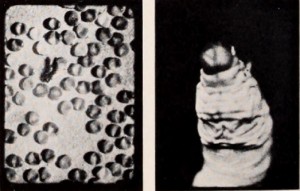
"Arthur R. Powell of Asuza, California, decided to photograph the silkworm from the egg to its full growth. For some of us who are of a nervous temperament this may seem a tedious task to set for oneself, but Powell started it and determined to see it through to the bitter end." American Cinematographer, Oct. 1932, 28.
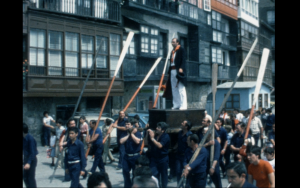
Kaxarranka dantzaren erreportajea
Reportaje de danza Kaxarranka.
A depiction of the Kaxarranka dance.
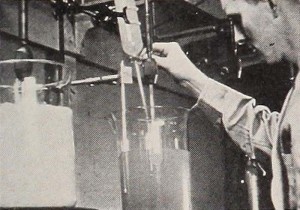
"Keeping in Touch, planned to indicate how printer and ink maker alike must keep in touch with fundamental research which is revolutionizing the graphic arts, was produced by Willard Pictures for International Printing Ink, a division of Interchemical Corporation, in New York City. A complex technical subject, involving such problems as spectrophotography and the effective filming of many gleaming machines, the production has been handled smoothly and clearly. In a pictorial argument where accurate color renditions of many differing materials were of paramount importance to the client, Willard Pictures has given its customary first class account of technical ability. The development of the film is well paced, and the use of music and narrative intelligent." Movie Makers, Dec. 1939, 636-637.
"Lillian McNulty gave a thorough behind-the-scenes look view of a big horse race in 'Kentucky Derby, 1937'" American Cinematographer, April, 1938, 173.
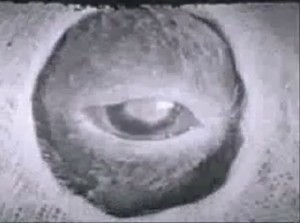
"Keratoplasty, by Henry M. Lester, ACL, is a beautifully perfect record of the operation of a corneal transplant for leucomateous eyes, filmed entirely in Kodachrome. The operation is performed by Dr. Ramon Castroviejo, a rabbit being the subject. Aside from the fact that this clearly executed film records an important and extraordinarily difficult operation in this field, it is notable for its brilliant photographic technique in handling the ultra closeup. In much of the footage, the eye itself practically fills the frame and, in this limited field of action, Mr. Lester has successfully shown every delicate bit of operative technique that is involved in this extremely sensitive surgical procedure. The area is so lighted that no shadows are cast to obscure detail, and the amazing rendition' of the delicate bit of transplanted tissue, the suturing and the various solutions employed, all in full color, is a genuine tribute to Mr. Lester's mastery of the Kodachrome process." Movie Makers, Dec. 1935, 550.
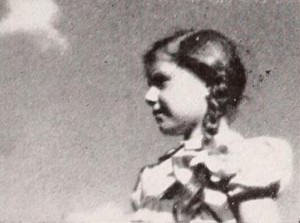
"These Third Avenue kids, see, are playing hide and seek around the front stoops and dark doorways of their native block, when one of them — a little girl — huddles thoughtlessly into the back seat of a parked and beckoning car. Her adventures, when the car is then driven off by a gay young pair of picnickers, comprise the story of Kid-Napped! by Victor Ancona. It is a dramatic story, full of suspense and impending tragedy, but it is one, happily, which refuses ever to take itself too seriously. The young man and his lady pass a bright day in the country with their sandwiches, soda pop and jazz music on a portable radio. The little girl — whom chance dictates shall not be discovered by the picnickers until near the film's end — wanders in happy wonder from flower to fern, from bird song to lakeside. These parallel themes — interspersed with occasional dramatic flashes of a frantic mother — are developed by Mr. Ancona in a suave combination of imaginative camera viewpoints, striking manipulation of outdoor lighting and competent cutting. An 8mm. production, Kid-Napped! eschews, with brilliant selectivity, the unsatisfactory long shot, to present the medium at its best." Movie Makers, Dec. 1944, 494.
"Film is a fictional story of a boy saving a dog from being hit by a train" Archives of Ontario.
"King Bookie: John Cowart set himself a tremendous goal in undertaking the production of this dramatic film, which has to do with bank robbers. But thanks to his zeal, his all around ability in movie making, the sincerity and cooperation of his amateur cast, and the cooperation of local merchants who happily contributed the use of their business establishments for locations, he has turned out a highly creditable production. The picture opens with a girl, unwittingly involved in the robbery, relating to an attorney events of the story which is pictured in retrospect. King Bookie is an underworld character who plots the crime, involves several others, some of whom meet death by his gun when the proceeds are retrieved from one gang member who sought to double-cross King Bookie. Narration, dialogue and musical score are a commendable effort of sound-on-film recording." American Cinematographer, May. 1951, 190.
According to the filmmakers, "The scenario was our own—concerning the difficulties confronting a British telegraph company in maintaining communications between Uganda and the Sudan. A story requiring such foreign locale—Africa's desert, veldt and jungle—was written with the object of demonstrating to our audiences the cinema possibilities of our northeastern states" (111).
Total Pages: 299